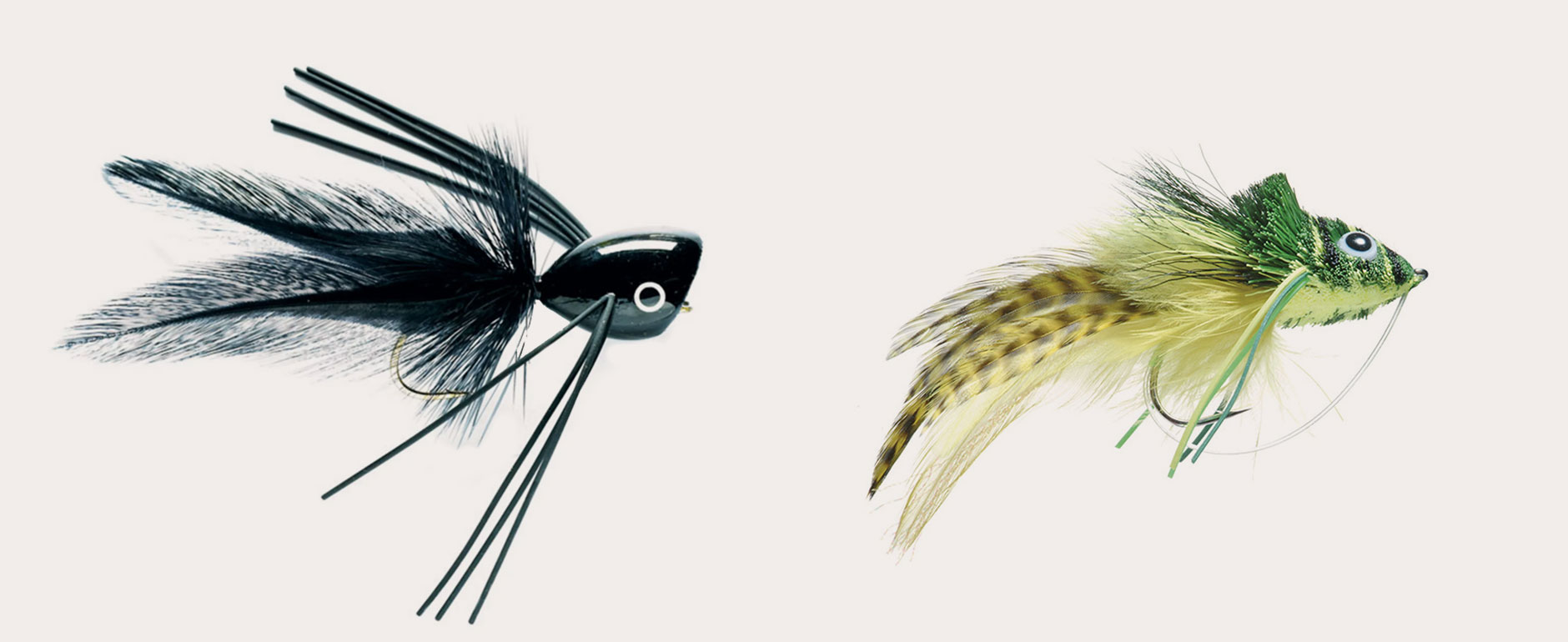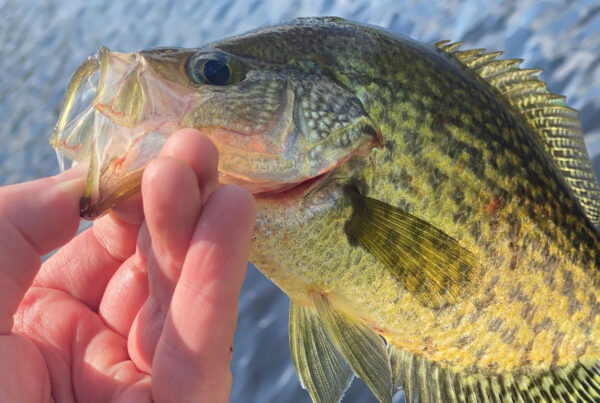Fly fishing for largemouth bass is an exhilarating experience, and when you’re targeting them on the surface with topwater flies, the thrill is unmatched.
The explosive strikes and the visual spectacle of a bass breaking the water’s surface to grab your fly is something every angler dreams of. If you’re looking to master the art of topwater largemouth bass fly fishing, here are four essential tips to get you started.

1. Select the Right Fly
When it comes to topwater fly fishing for largemouth bass, your choice of fly is crucial. Here are some popular options:
- Poppers: These are classic topwater flies with a concave or flat face. When stripped, they create a popping or gurgling sound that can be irresistible to bass.
- Sliders: Sliders have a more streamlined design than poppers and create a subtle wake as they move across the water. They’re perfect for more finicky bass or when fishing in calmer waters.
- Divers: These flies dive below the surface when stripped and then pop back up, mimicking a wounded baitfish.
Remember, the key is to match the hatch. Observe the local baitfish, frogs, or insects that bass might be feeding on and choose your fly accordingly.
2. Perfect Your Presentation
Largemouth bass are ambush predators, so your presentation should mimic the natural movements of their prey. Here are some techniques to consider:
- The Pop and Pause: Cast your fly, let it settle for a moment, then give it a sharp strip to make it pop. Follow this with a pause, allowing the ripples to dissipate. This mimics a wounded prey and can trigger aggressive strikes.
- Steady Retrieve: This technique works well with sliders. Use consistent, short strips to create a steady wake, imitating a swimming frog or baitfish.
- Vary Your Retrieve: Don’t stick to one method. If you’re not getting strikes, change up your retrieve speed or pattern.
3. Fish at the Right Time
Dawn and dusk are prime times for topwater fly fishing. During these low-light conditions, bass are more active and are often hunting near the surface. Additionally, overcast days can also be productive as the cloud cover can make bass more willing to strike at surface flies.
4. Be Patient
One of the biggest mistakes anglers make when topwater fly fishing is setting the hook too soon. When you see a bass strike, it’s instinctual to want to set the hook immediately. However, it’s essential to wait until you feel the weight of the fish. Often, the bass will swipe at the fly or miss it on the first attempt. By waiting, you give the bass a chance to come back for a second strike, ensuring a better hook-up.
Conclusion
Topwater fly fishing for largemouth bass is an art that requires patience, observation, and practice. By choosing the right fly, perfecting your presentation, fishing at the right times, and mastering the art of patience, you’ll be well on your way to experiencing the thrill of a bass exploding on your fly. Tight lines and happy fishing!



